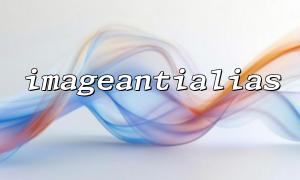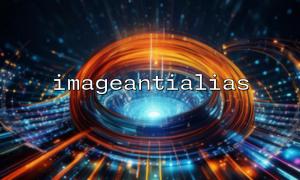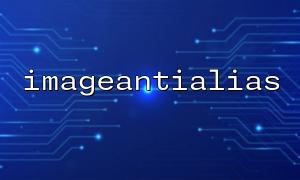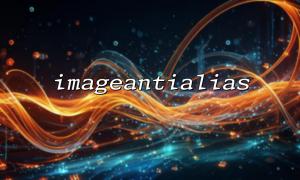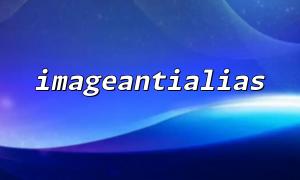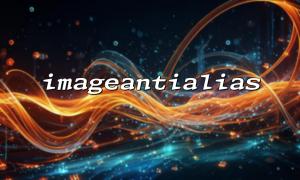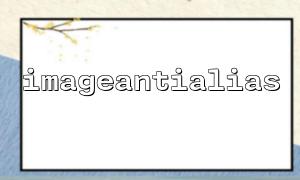When processing images in PHP, many developers will encounter problems such as obvious jagged image contours and unsmooth edges. To improve the quality and visual effects of images, PHP provides a very practical function - imageantialias() , which enables anti-aliasing to draw smoother and more delicate image outlines.
This article will introduce the use of the imageantialias() function, and combine the sample code to help you master how to use this function to improve the smoothness and detailed performance of the image.
imageantialias() is a function in PHP's GD library to enable or turn off anti-aliasing of images. When you draw lines, shapes, or text on an image, the edges of these elements will be smoother when anti-aliasing is turned on, avoiding jagged rough edges.
Function prototype:
bool imageantialias(resource $image, bool $enabled)
$image : Target image resource
$enabled : Boolean value, true to enable anti-aliasing, false to close
The return value is Boolean, indicating whether anti-aliasing is successfully set.
When you draw straight lines, rectangles, circles, or polygons, if you don't use anti-aliasing, the edges of the image will be very rough and have poor visual effects. Turning on anti-aliasing makes these shapes look more natural and soft, especially suitable for making icons, graphical interfaces, or pictures that require high-quality output.
The following example shows how to draw a high-quality circular outline using imageantialias() :
<?php
// Create a 200x200 True colored canvas
$width = 200;
$height = 200;
$image = imagecreatetruecolor($width, $height);
// Filled background with white
$white = imagecolorallocate($image, 255, 255, 255);
imagefill($image, 0, 0, $white);
// Set anti-aliasing to enable
imageantialias($image, true);
// Assign colors:Black is used to draw circular outlines
$black = imagecolorallocate($image, 0, 0, 0);
// Draw a circular outline,coordinate(100,100),radius90,Width is3
// Notice:GDLibraryimagearcThe function does not directly control the line thickness parameters,
// So it takes multiple drawings to simulate thicker lines。
$thickness = 3;
for ($i = 0; $i < $thickness; $i++) {
imagearc($image, 100, 100, 180 - $i * 2, 180 - $i * 2, 0, 360, $black);
}
// Output image to browser
header('Content-Type: image/png');
imagepng($image);
// Free memory
imagedestroy($image);
?>
In this code:
Anti-aliasing is enabled through imageantialias($image, true) .
Use imagearc() to draw arcs multiple times to simulate line width.
The resulting round profile edges are smooth and have no obvious jagged teeth.
Only true color images are supported : imageantialias() is only valid for true color images created by imagecreatetruecolor() and is not valid for palette images.
Performance overhead : Turning on anti-aliasing will increase the amount of calculations drawn, and performance may be affected when complex images or large-scale drawings are drawn.
Line width : The GD library itself does not support setting the line thickness directly, and is usually simulated by drawing multiple times.
Support graphics : Anti-aliasing has obvious effects on lines and shapes, but may have limited effects on some text.
By rationally using PHP's imageantialias() function, you can significantly improve the quality of drawing image outlines, making the edges of the figure smoother and more delicate. Flexible application of other GD functions can meet many high-quality image processing needs. If you are creating a graphical interface, generating dynamic images, or developing graphics-related applications, it is recommended to prioritize turning on anti-aliasing to improve the user experience.
